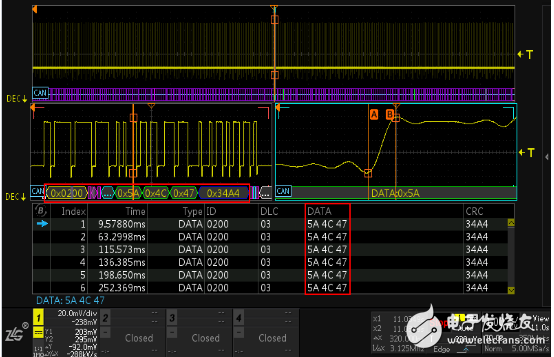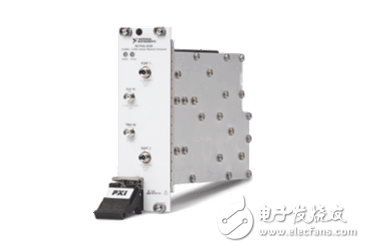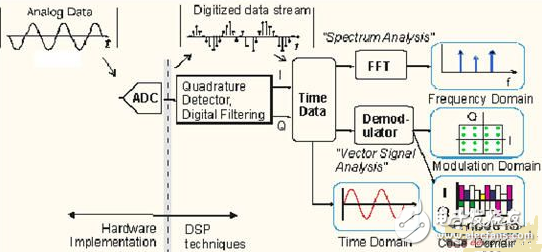The oscilloscope is a widely used test instrument. How much do you know about the following 12 functions? The original oscilloscope was just a simple waveform display and data measurement, and we needed to get the deeper meaning of the protocol waveform, which would take a while to analyze. For example: observe the IIC protocol, a clock signal, a data signal, we need to match the clock and the data signal one bit, to perform the combined conversion of 0/1, "translate" it into the form we need, and then correspond to the corresponding Physical quantity. This is not only a lot of work, low efficiency, but also easy to make mistakes. The current protocol decoding directly decodes the waveform data and displays it in hexadecimal, decimal or character form, which saves the process of engineer conversion and greatly accelerates the development efficiency. Figure 3 shows the decoding of a CAN protocol, which can be used in one step. CAN protocol decoding under dual ZOOM Usually we need a lot of measurement practice to achieve accurate amplitude and phase parameter measurements to avoid major errors. Due to the uncertainty of RF instrument measurements, small errors are likely to be ignored. The network analyzer is a sophisticated instrument that can detect very small errors. Network analyzers can be divided into scalar (only amplitude information) and vector (including amplitude and phase information) analyzers. The scalar analyzer was once widely used because of its simple structure and low cost. Vector analyzers provide better error correction and more sophisticated measurement capabilities. With the advancement of technology, the increase in integration and computational efficiency, and the reduction in cost, the use of vector network analyzers has become more and more popular. Electronic networks are measured in a similar manner to optical devices. The network analyzer produces a sinusoidal signal, usually a swept signal. When the DUT responds, it transmits and reflects the incident signal. The strength of the transmitted and reflected signals typically varies with the frequency of the incident signal. The response of the DUT to the incident signal is a representation of the DUT performance and the system characteristic impedance discontinuity. For example, the bandpass filter has a high reflection coefficient out of band and a high transmission coefficient in the band. If the DUT slightly deviates from the characteristic impedance, it will cause an impedance mismatch, resulting in an additional undesired response signal. Our goal is to establish an accurate measurement method that measures the DUT response while minimizing or eliminating uncertainty. What can a large LCD screen be used for? To be sure, you can watch the Signal Integrity Analysis Guide on your oscilloscope, but even more enjoyable is that you can watch the most recent movies (but you can't watch 3D videos yet). Oscilloscopes typically have a 20MHz bandwidth limit, which is a hardware filter. Some oscilloscopes also support software filters with adjustable cutoff frequencies. The ZDS2024Plus can be steplessly adjustable from 100Hz to 100MHz. The TDS5000 can perform 20MHz, 150MHz low-pass filtering, and can also perform a digital low-pass filtering called high-resolution acquisition. In this mode, the vertical resolution of the sampling point can be increased from 8bits to 12bits. The above system can output A signal like a PWM, like a sinusoidal waveform, tends to vary in pulse width. Agilent's Infiniium oscilloscope combined with 89601 vector signal analysis software constitutes a wideband radar analyzer that can perform a variety of radar measurements and analysis from pulse, baseband, intermediate frequency and RF/microwave angles, including: 1. Radar pulse parameter test, such as rise time, pulse width and stability, pulse interval and stability; 2. Radar pulse jitter, clock, PLL jitter and other tests and analysis; 3. In-pulse initial phase test of the radar; 4. Vector analysis of radar signals; 5. Radar receiver I/Q channel conformance test; 6. Broadband test and online test of radar various types of amplifiers. Infiniium oscilloscopes are available in 600MHz to 1GHz bandwidth (4GSa/s sampling rate), 2GHz to 7GHz bandwidth (20GSa/s sampling rate), and 10GHz to 13GHz bandwidth (40GSa/s sampling rate). Combined with 89601 vector signal analysis software, the analysis bandwidth is up to 13GHz, making it a veritable broadband radar analyzer. The signal enters the oscilloscope through a cable or oscilloscope probe (which can be tested online using an oscilloscope probe). The oscilloscope internally passes through the attenuator and preamplifier, and then the signal is coupled to the ADC for digitization. The digitized waveform can be displayed directly, or I/Q conversion and digital filtering are used to convert I and Q signals (I and Q signals can be directly displayed); FFT is performed on the time domain data to obtain frequency domain data; time domain data can be demodulated to solve the problem. Tuning analysis, such as displaying a constellation map, or displaying code domain data. As can be seen from the figure, the wideband radar analyzer is actually a hardware and software combined data acquisition and data processing process. Because the ADC has a high enough real-time sampling rate (up to 40GSa/s), the wideband radar analyzer has a sufficiently high analysis. Bandwidth up to 13GHz. Most oscilloscopes have an A/D resolution of 8 bits. With different acquisition modes, the vertical resolution can be increased by averaging adjacent samples as described below. So how much can the resolution be improved by averaging and using high resolution mode? In theory, the increase is 0.5Log2N, where N is the average of adjacent samples. The reality is that a 2-byte memory depth limits this increase. The two bytes are 16 bits. One of the bits is reserved as a sign bit and the remaining 15 bits are used as data values. The rounding error causes the 14th and 15th bits to become random values, thereby making the actual limit become 13 bits. Therefore, the improvement can start from about six significant digits and can be increased to about 13 digits with a height oversampling. Improve vertical resolution Aluminum Alloy Die Casting Blank Aluminum Alloy Die Casting Blank,Pressure Die Cast,Die Casting Products Alloy,Molded Precision Die Parts Cast Dongguan Metalwork Technology Co., LTD. , https://www.dgdiecastpro.com




April 25, 2023